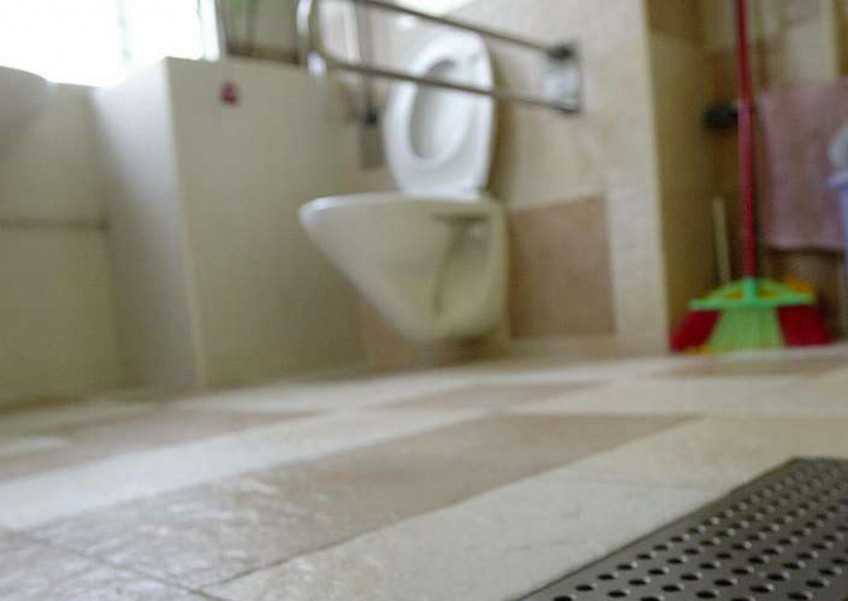Bathroom safety for the elderly


Taking a tumble is no laughing matter for elderly folk. They can suffer head injuries or fractures that may confine them to a wheelchair.
Falls in the bathroom are quite common, said Ms Shirleen Sim, an occupational therapist at Tan Tock Seng Hospital.
While there are no official figures, she estimates that at least a third of elderly rehabilitation patients in the hospital have fallen in the bathroom. She points out the hot spots, and what can be done to guard against falls.
SLIPPERY SURFACES
The floor can get slippery from soapy water, so if an elderly person does not feel steady on his feet, he should sit on a chair while showering. Try not to let him sit on the covered lid of the toilet seat as the smooth surface can easily get slippery and cause him to slide off.
Installing a vertical grab bar in the shower cubicle may be helpful, allowing him to hold on to it when he stands up to wash.
One can also place non-slip mats in the wet areas of the bathroom. But lay them out properly because uneven edges can cause the elderly person to trip instead.
Grid-type mats should be cleaned regularly. Otherwise, mould may grow and make the mats slippery.
Some people may like wearing slippers in the toilet to keep their feet dry. While this is fine, do check that the soles are not worn out and that the slippers provide sufficient traction in wet conditions.
LIGHTING
Some elderly people may not bother switching on the light when they go to the bathroom at night. This may cause them to bump into or trip over things, and poses a high risk to those with vision problems.
UNSTABLE SUPPORT
Elderly people who require support to stand from a sitting position may use the sink to push themselves up. Others may grab on to the ends of a towel hanging on a rail or hook, or use the tap as a form of support.
But fixtures like towel rails and taps are often not designed to support heavy weight. The sink may also come loose. Instead, install grab bars for additional support. A suggestion is to have a horizontal grab bar at the side of the toilet bowl.
Avoid using grab bars to hang towels, clothes or other items, as they may reduce one's grip.
REACHING FOR THINGS
Minimise the walking required by the elderly person by placing things that he uses within easy reach.
For instance, his toiletries can be placed on a shelf at a height that falls between his waist and shoulder, instead of on the floor.
The elderly person should also take his clothes and other shower items into the cubicle, so he does not have to step in and out.
OTHER POINTERS
•Clear clutter from the bathroom floor to prevent people from tripping over them.
•The elderly person can be encouraged to take a shower when someone is at home, and to leave the bathroom door unlocked in case he falls and needs help.
•Keep toxic liquids, such as cleaning agents and detergent, away from regular toiletries. If the elderly person has impaired vision, he may mistakenly identify these chemicals as shower products.

This article was first published on Dec 15, 2015.
Get a copy of The Straits Times or go to straitstimes.com for more stories.